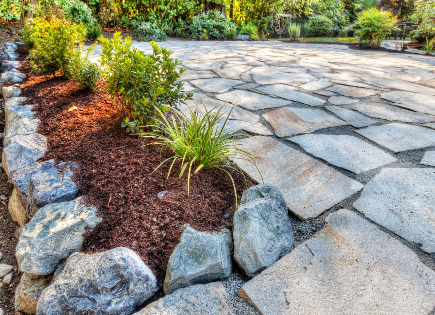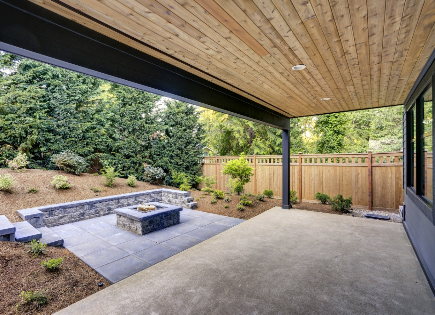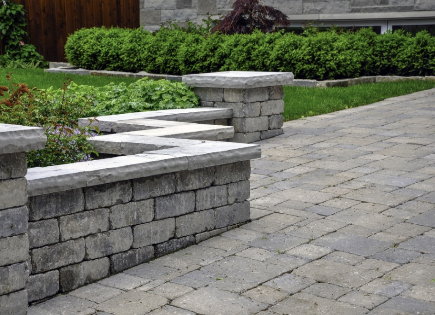
PAVERS
The beauty and versatility of pavers can accent the outside of any home. You can make elaborate patterns on your front and back walkways, place them randomly in a garden for a fun and striking look, or enhance your curb appeal with a beautifully paved driveway.
The use of pavers is growing rapidly on both commercial and residential construction projects. They are very versitile and can be removed and re-installed if need be. Pavers are installed over a compacted base of soil and sand. They add a very nice look to your artificial grass lawn edging as well.
Types Of Pavers
Natural Stone
Natural stone, such as fieldstone and flagstone, is very attractive and versatile. Because it is not manufactured, it is the most expensive type of paver. Natural stone is typically used for pathways, walkways or edging, and has an undeniable beauty to it. It’s the choice of many who wish to improve the exterior of their home. It’s important to note that natural stone varies in hardness and brittleness, and may crack or stain more easily than other pavers.
Brick
Brick is considerably less expensive than natural stone and is made from clay or a combination of concrete and aggregate, which is then painted to look like brick. This allows for a wide variety of available colors and textures. Brick is both durable and versatile, perfect for walkways, edging and patios. Clay bricks keep their color, are very low maintenance and are more versatile than concrete because you can use them in a wider variety of configurations.
Concrete
Concrete pavers are made from a combination of concrete and aggregate. They are generally precast and frequently interlocking, which makes planning, measurement and installation much easier. They are specifically for outdoor use, although it is best to check with the manufacturer about their durability for use in driveways. You may need to seal or occasionally replace concrete pavers to retain their color.



